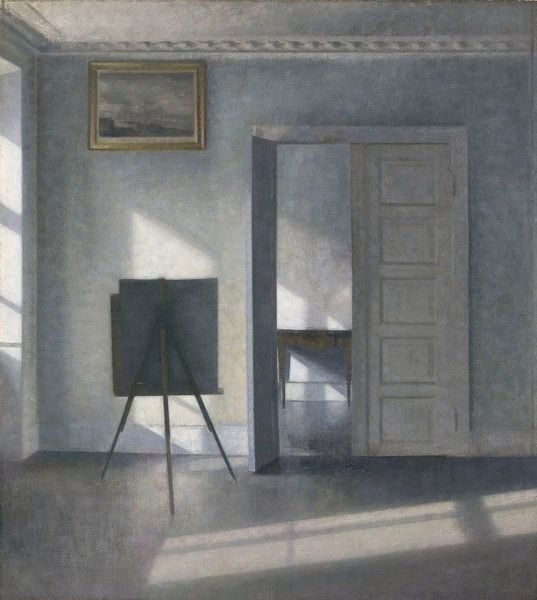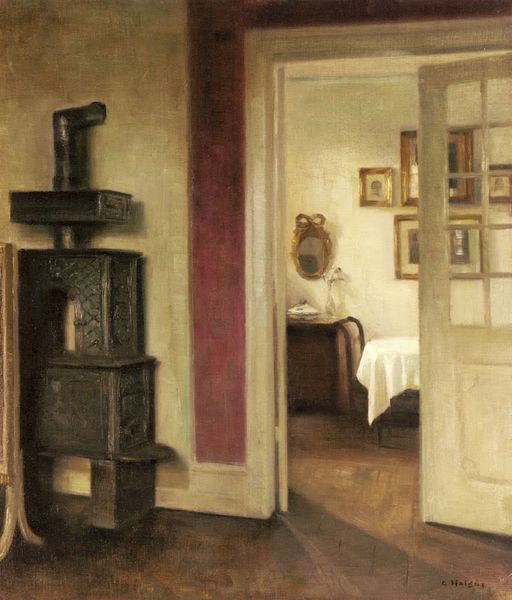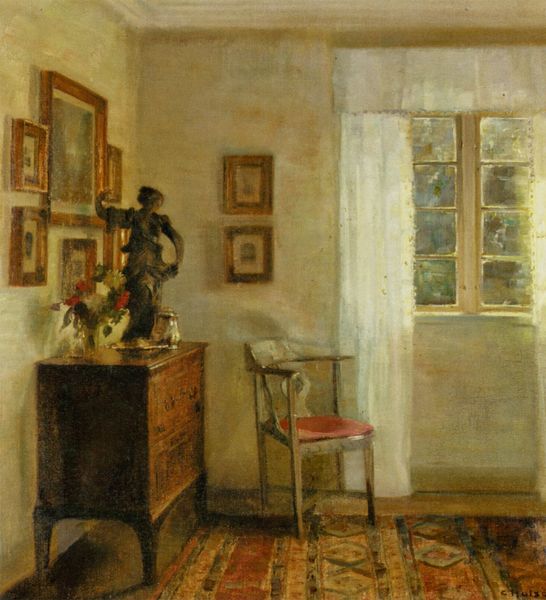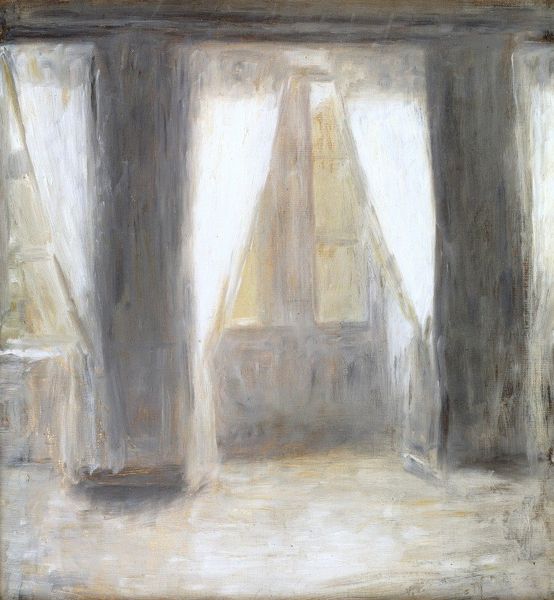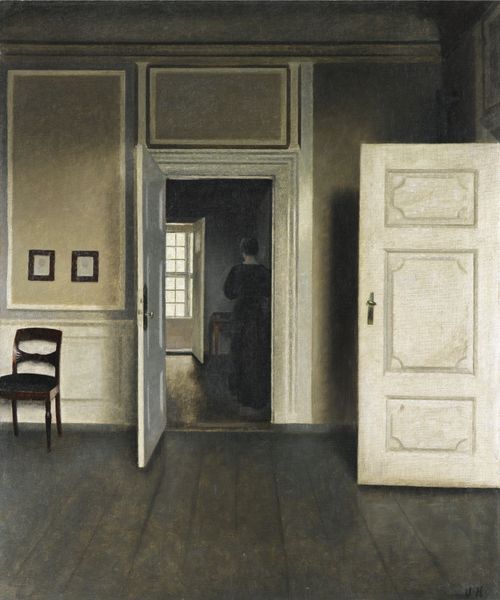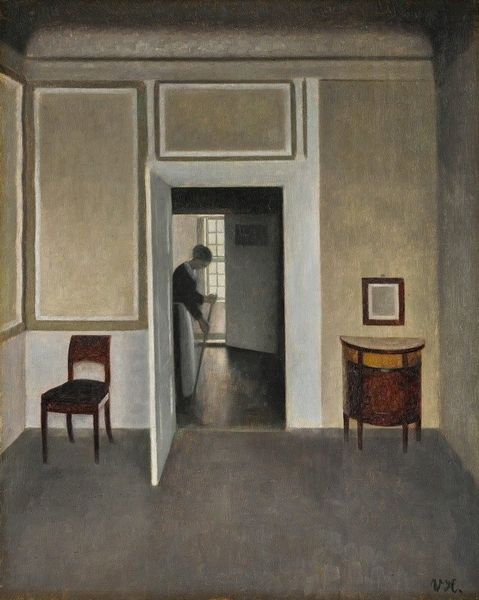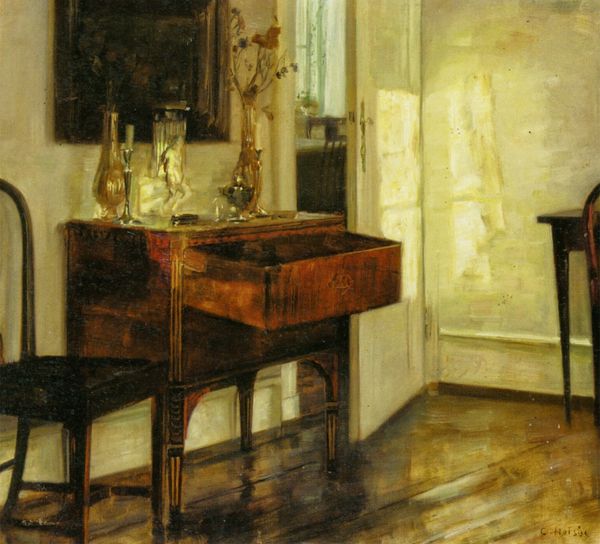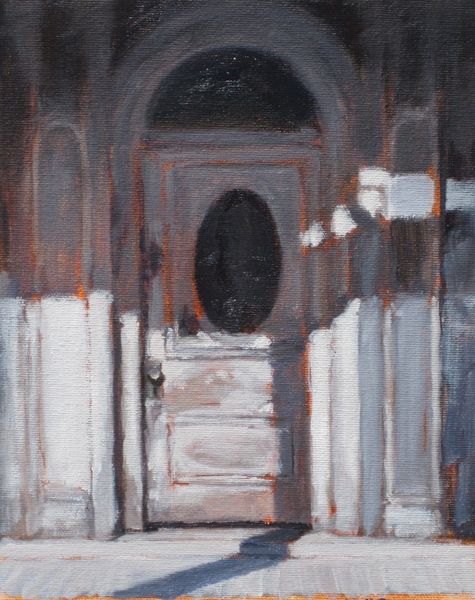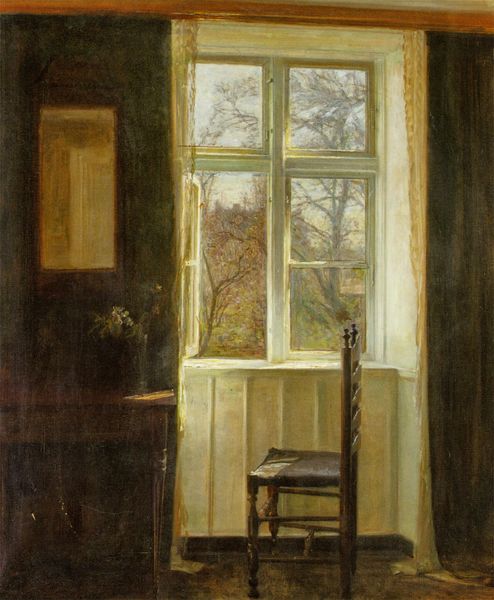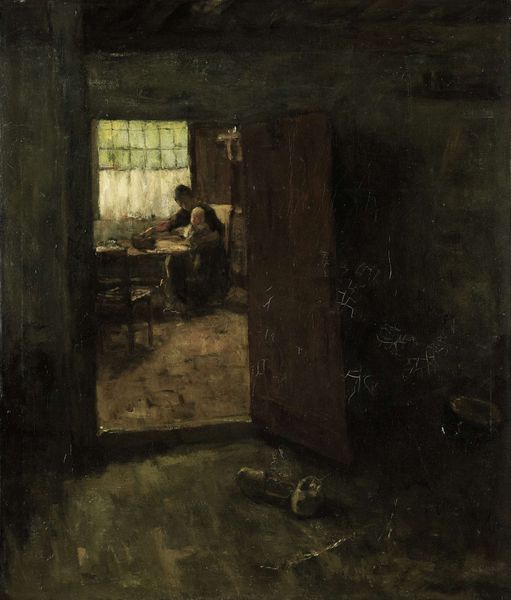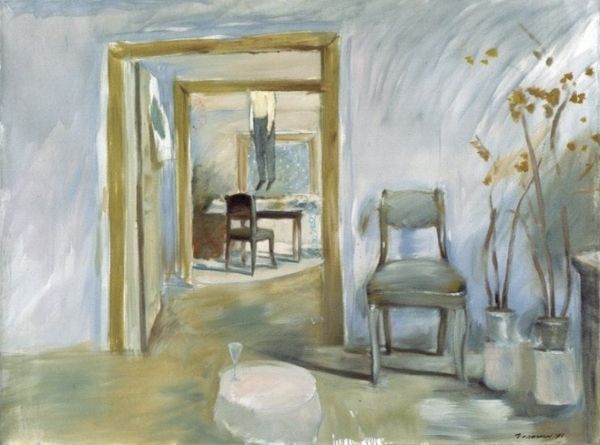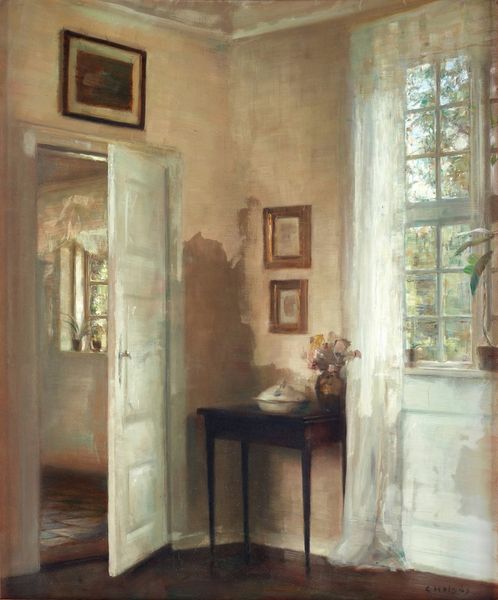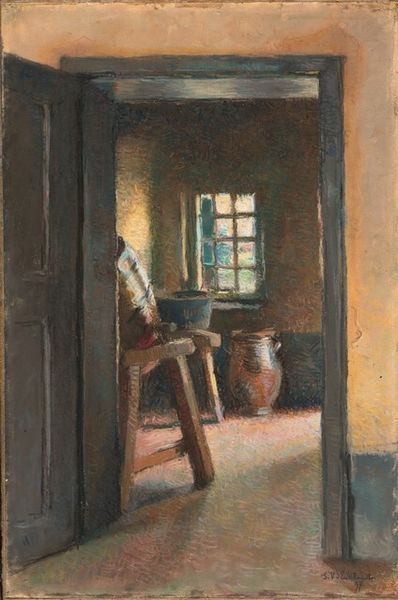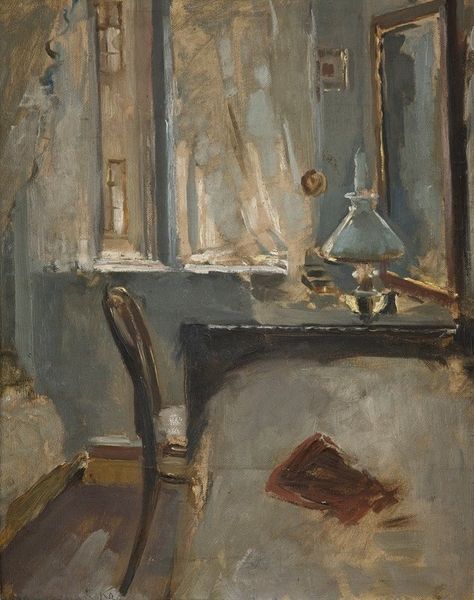
painting, oil-paint
#
painting
#
oil-paint
#
landscape
#
oil painting
#
modernism
#
realism
Copyright: Public Domain: Artvee
Curator: Vilhelm Hammershøi's "Interior. An Old Stove," painted in 1888 using oil paints, presents a domestic space that's incredibly…quiet. Editor: Eerily so, yes. My immediate impression is one of profound stillness, like the silence that follows a loud noise. There’s something melancholic about this room, an emptiness that feels heavy. Curator: Hammershøi, though considered part of the Realism movement, stripped away so much detail, and the way he handled the light creates an atmosphere almost more dreamlike than realistic. Editor: Absolutely, and that emptiness is crucial. Look at that stove – it’s not actively heating anything. It stands like a dark monolith, a symbol of past comforts now dormant. One wonders about labor in relation to domestic settings. What has just occurred in this room, who made this space, who heated that oven? Curator: You can feel that absent warmth! His interiors often featured his wife, Ida, as a solitary figure, but here, even that human presence is gone, making the stillness almost palpable. There are stories absent or untold. It makes one imagine the painter at his easel. Editor: The limited color palette also emphasizes a muted existence. It speaks volumes about domestic roles and expectations that often go unseen, a sort of intentional muting in the wake of cultural forces at play. Curator: His obsession with light reminds me of Vermeer, but while Vermeer’s light celebrates everyday life, Hammershøi’s…almost mourns it. Or perhaps he seeks a refuge? There is always that suggestion of the open door, always an invitation. Editor: And note that the perspective directs the eye *out* of the space, implying not comfort but the need to exit. It almost suggests a longing for something beyond the stifling walls. Even if it means going out into more gendered cultural constructs. What might freedom mean in a time like 1888 for the woman who is never depicted? Curator: I think we often project ourselves into these spaces, seeking out feelings rather than certainties. And maybe that's why his works continue to draw us in. It suggests our own feelings and projections are valid when it comes to understanding domestic spheres. Editor: Yes, precisely! It encourages us to find resonance—or perhaps dissonance—between our contemporary experiences and these spaces. His paintings continue to invite a more inclusive and layered cultural awareness.
Comments
No comments
Be the first to comment and join the conversation on the ultimate creative platform.
